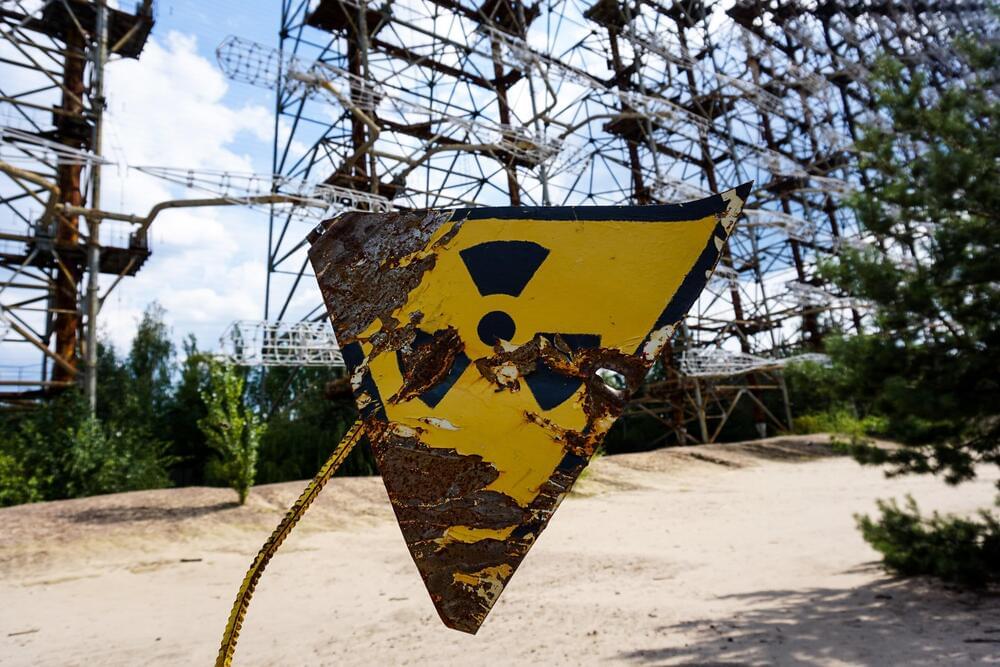Category: military – Page 100

IBM wants its quantum supercomputers running at 4,000-plus qubits by 2025
Forty years after it first began to dabble in quantum computing, IBM is ready to expand the technology out of the lab and into more practical applications — like supercomputing! The company has already hit a number of development milestones since it released its previous quantum roadmap in 2020, including the 127-qubit Eagle processor that uses quantum circuits and the Qiskit Runtime API. IBM announced on Wednesday that it plans to further scale its quantum ambitions and has revised the 2020 roadmap with an even loftier goal of operating a 4,000-qubit system by 2025.
Before it sets about building the biggest quantum computer to date, IBM plans release its 433-qubit Osprey chip later this year and migrate the Qiskit Runtime to the cloud in 2023, “bringing a serverless approach into the core quantum software stack,” per Wednesday’s release. Those products will be followed later that year by Condor, a quantum chip IBM is billing as “the world’s first universal quantum processor with over 1,000 qubits.”
This rapid four-fold jump in quantum volume (the number of qubits packed into a processor) will enable users to run increasingly longer quantum circuits, while increasing the processing speed — measured in CLOPS (circuit layer operations per second) — from a maximum of 2,900 OPS to over 10,000. Then it’s just a simple matter of quadrupaling that capacity in the span of less than 24 months.
Dr Jerome H. Kim, MD, Director General, IVI — Safe, Effective, Affordable Vaccines For Public Health
Discovery, Development & Delivery Of Safe, Effective & Affordable Vaccines For Global Public Health — Dr. Jerome H. Kim, M.D., Director General, International Vaccine Institute (IVI)
Dr. Jerome H. Kim, M.D., is the Director General of the International Vaccine Institute (IVI — https://www.ivi.int/), a nonprofit International Organization established in 1997 as an initiative of the United Nations Development Programme (UNDP), dedicated to the discovery, development and delivery of safe, effective and affordable vaccines for global public health.
IVI is headquartered in Seoul and hosted by the Republic of Korea with 36 member countries and the WHO on its treaty.
Dr. Kim served as the Principal Deputy and Chief of the Laboratory of Molecular Virology and Pathogenesis at Military HIV Research Program at the Walter Reed Army Institute of Research (WRAIR), in addition to being the Project Manager for the HIV Vaccines and Advanced Concepts Evaluation Project Management Offices, U.S. Army Medical Material Development Activity.
Dr. Kim was also a Professor within the Division of Infectious Diseases of the Department of Medicine at the Uniformed Services University of the Health Sciences. From 2004 – 2009 he led the Army’s Phase III HIV vaccine trial (RV144), the first demonstration that an HIV vaccine could protect against infection, as well as subsequent studies that identified laboratory correlates of protection and sequence changes in breakthrough HIV infections after vaccination.

Using radar to monitor burn victims and babies? It’s now possible
University of Sydney scientists have achieved a technology breakthrough with potentially life-saving applications—all using an improved version of radar.
Traditionally, radar is associated with airport control towers or military fighter jets, but a new, highly sensitive radar developed at the University of Sydney takes this technology into the human range.
Called advanced photonic radar, the ultra-high-resolution device is so sensitive it can detect an object’s location, speed, and/or angle in millimeters as opposed to meters. This could enable usage in hospitals to monitor people’s vital signs such as breathing and heart rate.

Pentagon finds hundreds of cyber vulnerabilities among contractors
“[The program] has long since recognized the benefits of utilizing crowdsourced ethical hackers to add defense-in-depth protection to the DoD Information Networks,” Melissa Vice, interim director of the vulnerability disclosure program, said in a statement.
Vice added that the pilot was intended to identify whether similar critical and high-severity vulnerabilities existed for small-to-medium-cleared and non-cleared defense-industrial base companies with potential risks for critical infrastructure and the U.S. supply chain.
Which contractors were involved was not disclosed. The campaign launched in April 2021 with 14 participating companies and 141 publicly accessible assets to examine. Interest quickly ballooned; 41 companies and nearly 350 assets were eventually admitted. The results were announced May 2.
Elon Musk’s SpaceX Shuts Down Russian Jamming Attack!
When it comes to responding to emerging threats, the Pentagon’s director for electromagnetic warfare suggested today that the US military’s electronic warfare organization should borrow a leaf from SpaceX.
SpaceX founder Elon Musk said that Russia had jammed Starlink terminals in Ukraine for hours at a time after SpaceX shipped Starlink terminals to Ukraine in February in an apparent effort to help Ukraine preserve its internet connection amid the war with Russia. Starlink was back up and running after a software upgrade, according to Musk, who added on March 25 that the constellation had “resisted all hacking & jamming attempts” in Ukraine.
Assuming Musk — who is known for being a showboater in his public pronouncements — is giving an accurate image, a private company thwarting Russian EW attempts with software updates is the kind of thing that makes Pentagon EW experts sit up and take notice.
“That’s wonderful from the standpoint of an EW technologist. Dave Tremper, head of electronic warfare for the Pentagon’s acquisition office, remarked, “That paradigm and how they executed that is sort of eyewatering to me.” “We need to be able to upgrade in the same way that Starlink was able to when a threat appeared. We need to be able to modify our electromagnetic posture quickly, and we need to be able to change what we’re attempting to do without sacrificing capabilities.”
Subscribe — https://bit.ly/3lPAZZ3

NRL Conducts Successful Terrestrial Microwave Power Beaming Demonstration
A microwave dish transmitter is pointed toward a rectifying antenna in part of the Safe and Continuous Power Beaming – Microwave (SCOPE-M) demonstration at Army Blossom Point Research Field, Maryland, Sept. 21, 2021. U.S. Naval Research Laboratory developed the rectifying antenna, “rectenna”, to convert an x-band microwave beam to 1 kilowatts of DC power at a range of 1 kilometer.
Photo Information
Olivia Zetter — Head of Government Affairs and AI Strategy — National Resilience, Inc.
Making the future of medicine possible by rethinking how medicines are made — olivia zetter, head of government affairs & AI strategy, resilience.
Olivia Zetter is Head of Government Affairs and AI Strategy at National Resilience, Inc. (https://resilience.com/) a first-of-its-kind manufacturing and technology company dedicated to broadening access to complex medicines and protecting bio-pharmaceutical supply chains against disruption.
Founded in 2020, National Resilience, Inc. is building a sustainable network of high-tech, end-to-end manufacturing solutions to ensure the medicines of today, and tomorrow, can be made quickly, safely, and at scale.
Olivia brings extensive experience in national security spanning diplomacy, defense, and development, along with emerging technology issues. Olivia has held multiple positions in government, most recently as a Director of Research and Analysis at the National Security Commission on Artificial Intelligence, an independent federal commission established by Congress to examine the impact of artificial intelligence on national security and defense.
Olivia previously served at the Department of State as a Foreign Affairs Officer in the Office of the Coordinator for Cyber Issues, where her work spanned a diverse range of cyber policy areas. She also served as the Special Advisor on Trans-Regional Issues to the Special Presidential Envoy for the Global Coalition to Counter ISIS, where she coordinated efforts to counter the terrorist organization’s financing, foreign terrorist fighter flows, and external operations.

Nuclear expert cautions against unfamiliar new nuclear age
High-tech advances in weapons technologies and a return of ‘great power nuclear politics’, risk the world ‘sleepwalking’ into a nuclear age vastly different from the established order of the Cold War, according to new research undertaken at the University of Leicester.
Andrew Futter, Professor of International Politics at the University of Leicester, makes the warning in a research paper for the Hiroshima Organization for Global Peace (HOPe), published today (Friday).
While stockpiles are much reduced from the peak of up to 70,000 nuclear weapons seen in the 1980s, progress in a number of new or ‘disruptive’ technologies threatens to fundamentally change the central pillars on which nuclear order, stability and risk reduction are based.